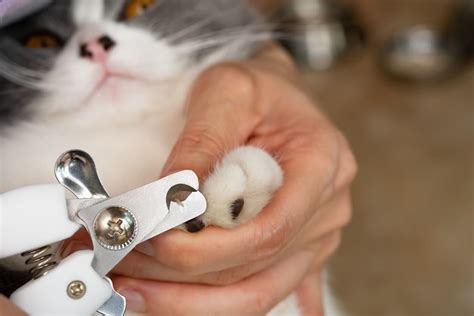Why Nail Care is a Must
Cats, with their agile paws and playful nature, often engage in activities that can take a toll on their nails. Regular nail grooming is crucial for their overall health and well-being, as neglected nails can lead to discomfort, pain, and even serious health issues.

According to the American Veterinary Medical Association (AVMA), approximately 25% of cats suffer from overgrown or damaged nails, which can result in:
- Pain and discomfort while walking or jumping
- Ingrown nails that pierce the paw pads
- Broken nails that can cause bleeding and infection
- Difficulty grasping objects or using the litter box
The Ultimate Guide to Cat Nail Trimming
Trimming your cat’s nails may seem like a daunting task, but it’s a skill that every cat owner should master. With a little patience and the right techniques, you can ensure your feline friend’s nails are healthy and comfortable.
Essential Tools
- Nail clippers: Specifically designed for cats, these clippers have a sharp cutting blade and a small blade guard to prevent over-trimming.
- Styptic powder: A clotting agent used to stop bleeding in case of accidental over-cutting.
- Treats or toys: To reward your cat for good behavior during the trimming process.
Step-by-Step Trimming Instructions
- Gather your tools: Assemble all the necessary tools before starting.
- Hold your cat securely: Gently wrap your cat in a towel or use a cat grooming restraint to prevent them from moving suddenly.
- Examine the nail: Identify the quick, the pink part of the nail that contains blood vessels. Cutting into the quick will cause bleeding and pain.
- Trim the nail: Hold the clippers perpendicular to the nail and cut just below the quick. Trim only a small portion at a time to avoid over-cutting.
- File the edges: Use a nail file or sandpaper to smooth any sharp edges.
- Reward your cat: Give treats or playtime to make the experience positive and reinforce good behavior.
Nail Care Beyond Trimming
In addition to trimming, there are other aspects of nail care that contribute to your cat’s health:
Regular Inspections
Examine your cat’s nails every week or two to check for signs of overgrowth, damage, or infection.
Exercise
Encourage your cat to engage in scratching and climbing activities to naturally wear down their nails.
Diet
Provide your cat with a balanced diet rich in nutrients that support healthy nail growth, such as taurine and biotin.
Common Mistakes to Avoid
- Cutting too short: Avoid trimming into the quick, as this can cause pain and bleeding.
- Neglecting black nails: Black nails can be difficult to see, but they need to be trimmed just like other nails.
- Punishing your cat: Trimming should be a positive experience. Never punish your cat if they struggle or resist.
FAQs
- How often should I trim my cat’s nails? Every 1-2 weeks or as needed.
- What if I accidentally cut into the quick? Apply styptic powder to stop the bleeding and seek veterinary attention if necessary.
- My cat hates having their nails trimmed. What can I do? Practice handling your cat’s paws and gradually introduce the clippers.
- Can I use human nail clippers on my cat? No. Human nail clippers are too large and can damage your cat’s nails.
- How do I treat overgrown nails? If your cat’s nails are severely overgrown, they will require veterinary attention for trimming.
Conclusion
Regular nail care, including trimming and other essential practices, is vital for your cat’s health and well-being. By following the tips and techniques outlined above, you can ensure your feline companion’s nails are healthy, comfortable, and ready to conquer the world, one paw at a time.





















